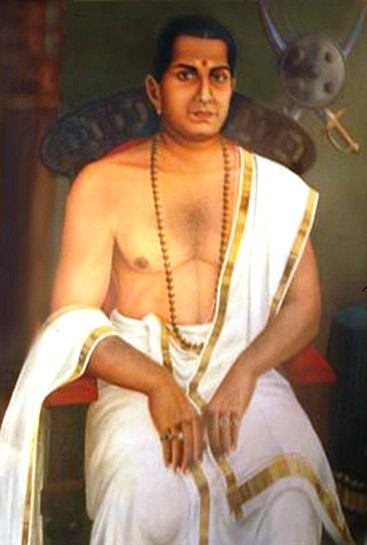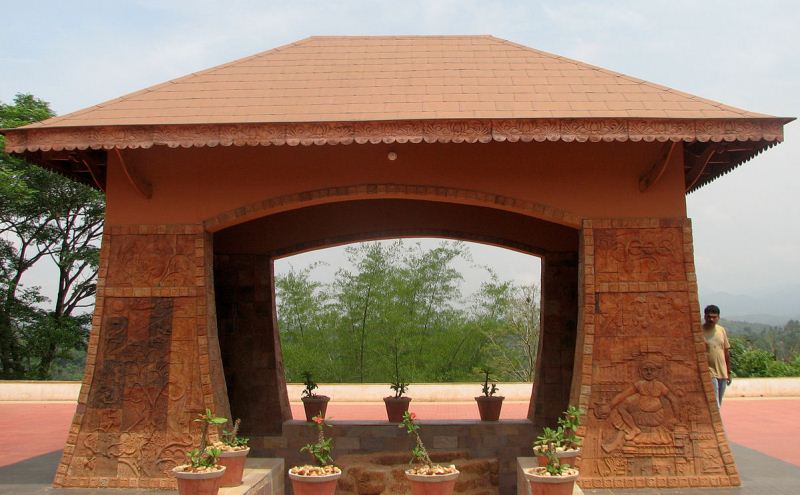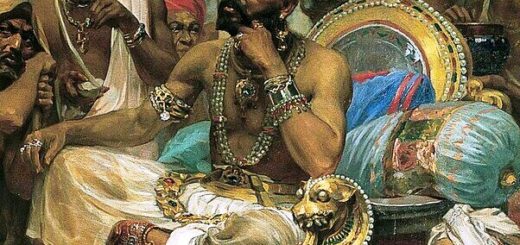Pazhassi Raja – Also Known as Kerala Simham
Today, November 30 is the death anniversary of Kerala Varma Pazhassi Raja, one of the greatest warriors Kerala has ever witnessed. Battles in Malabar against British were fought under the leadership of Pazhassi Raja. He was a member of Kottayam royal family of Malabar. His battles against British can be included in one of the golden chapters of India’s struggle for independence.
50 years before India started its freedom revolts against British colony rule in 1857, it was already begun in small Kerala. European merchants who first reached Kerala conquered many parts of Kerala. When Malabar came under the control of British rule, many small princely states accepted the monopoly of British. But Pazhassi Raja protested against the monopoly of East India Company rule. He declared that British has no power to rule his kingdom. Through hidden attacks, he challenged British and later he was named ‘Kerala Simham’ by Sardar K. M. Panicker, which literally means ‘Lion of Kerala’.

Revolts of Pazhassi Raja against powerful guns of British using Indians’ bows & arrows gave strong challenges to British and he was able to resist and survive for a long time. So his battles fought against British definitely deserve great distinction in India’s early freedom struggle movements long before well-organized freedom movement actually started.
First Revolt of Pazhassi Raja conducted during 1793–1797
First revolt of Pazhassi was against the bad policies made by British. The taxation law implemented by British evoked wide protest among all groups of people. Ignoring Pazhassi Raja’s protests, British gave the assignment of tax collection to Veera Varma of Kurumbranad. Veera Varma was the uncle of Pazhassi Raja who was loyal to British East India Company. This wrong approach by Company propelled the first revolt against British.
Pazhassi asked people to protest against the tax policies made by British and begin battle against them. In 1793 June, Pazhassi froze all sorts of tax collections initiated by British, and took over the power to collect tax. With no chances left, in December the company made an agreement with Pazhassi. In 1794, company cancelled the agreement made with Pazhassi, and once again assigned the task to Kurumbranad. Very soon Pazhassi started his open revolts against British.
As it was not possible for British to collect tax and establish monopoly in Kottayam in the presence of Raja, they decided to arrest him. But Pazhassi got this message somehow, and he along with his family escaped to Wayanad. The army of East India Company plundered the wealth of Pazhassi’s palace. Pazhassi earned strong support from tribal groups – Kurichyar and Kurumbrar and with their help, he conquered Kuttyadi Churam (mountain pass) and thus ruptured the communication between Wayanad and Low Malabar.
Even while Pazhassi stayed in Wayanad, British were not able to collect taxes. Common people of Kottayam, landlords and Kaitheri Ambu & Kannoth Shekharan – the nobles of Pazhassi Raja prevented British men from collecting taxes.
By this time, Pazhassi Raja relocated to hilly areas of Wayanad so that he could find suitable hideouts to fight against British. British army who stood at the major spots of Wayanad had to accept their defeat and withdrew. In 1797 February, British sent a big army to attack the major centres of Pazhassi in Wayanad. But with the help of a powerful army, Pazhassi Raja defeated the British. It included 1000s of tribal people.
Later British realized that for their existence, only alternative left was an agreement with Pazhassi Raja. For this purpose, Bombay Governor Jonathan Dangan reached Malabar. He cancelled the agreement given to Kurumbranad to collect taxes. But it was only a temporary seize to the tensions existed between Pazhassi Raja and British.
Second Revolt of Pazhassi Raja conducted during 1800 – 1805
Second Revolt received more acceptance and support from local people. In 1799, with the fall of Sreerangapatnam (fall of Tipu), British took over the power of Wayanad. Pazhassi protested this move of British East India Company. He made a powerful army consisting of Nairs, Mappilas, Kurichyar and tribal people. He assigned power to several loyal leaders to prepare revolt against British. Kannavath Shankaran Mambiar, Kaitheri Ambu Nair, Edachena Kungan Nair, Pallur Eman Nair, Kurichyar’s leader – Thalaykkal Chandu were among those prominent leaders.
In 1800, Colonel Arthur Wellesley was appointed as the leader of British army. To defeat Pazhassi Raja, he tried different tricks. In 1801, Colonel Stevenson reached Wayanad with a grand army. The British targeted to isolate Pazhassi Raja and defeat him. In 1801 November, British army hanged Kannavath Nambiar and his son. It was a great setback to Pazhassi.
In 1802, Major MacLeod, the principal collector of Malabar banned the use of weapons in the district. Edachena Kungan Nair and Thalaykkal Chandu decided to revolt against British. British resisted the attack with the help of local police named Kolkaar.
Thomas Warden and Thomas Harvey Babber got appointed as collector of Malabar and sub-collector of North Malabar respectively. They started new moves against Pazhassi. Under the leadership of Major MacLeod, British received success over Pazhassi’s army. They made use of Kolkaar to fight against Pazhassi army. They also captured Mappilas who supplied arms to Pazhassi Raja. British announced big sum as reward to catch Pazhassi Raja.

Memorial of Pazhassi
In 1805 November British got to know about the secret hidden out of Pazhassiraja. On 30th November Thomas Harvey Babber reached the place accompanied by 50 British men and 100 Kolkaar. They attacked Pazhassi and his people at Mavilathottil unexpectedly. In the official report sent by Thomas Harvey Babber to main collector, he declared the death of Pazhassi Raja in the battle fought. But there is also an argument that Pazhassi took his life by himself when he was severely wounded. So the precise nature of Raja’s death is still controversial.














Recent Comments